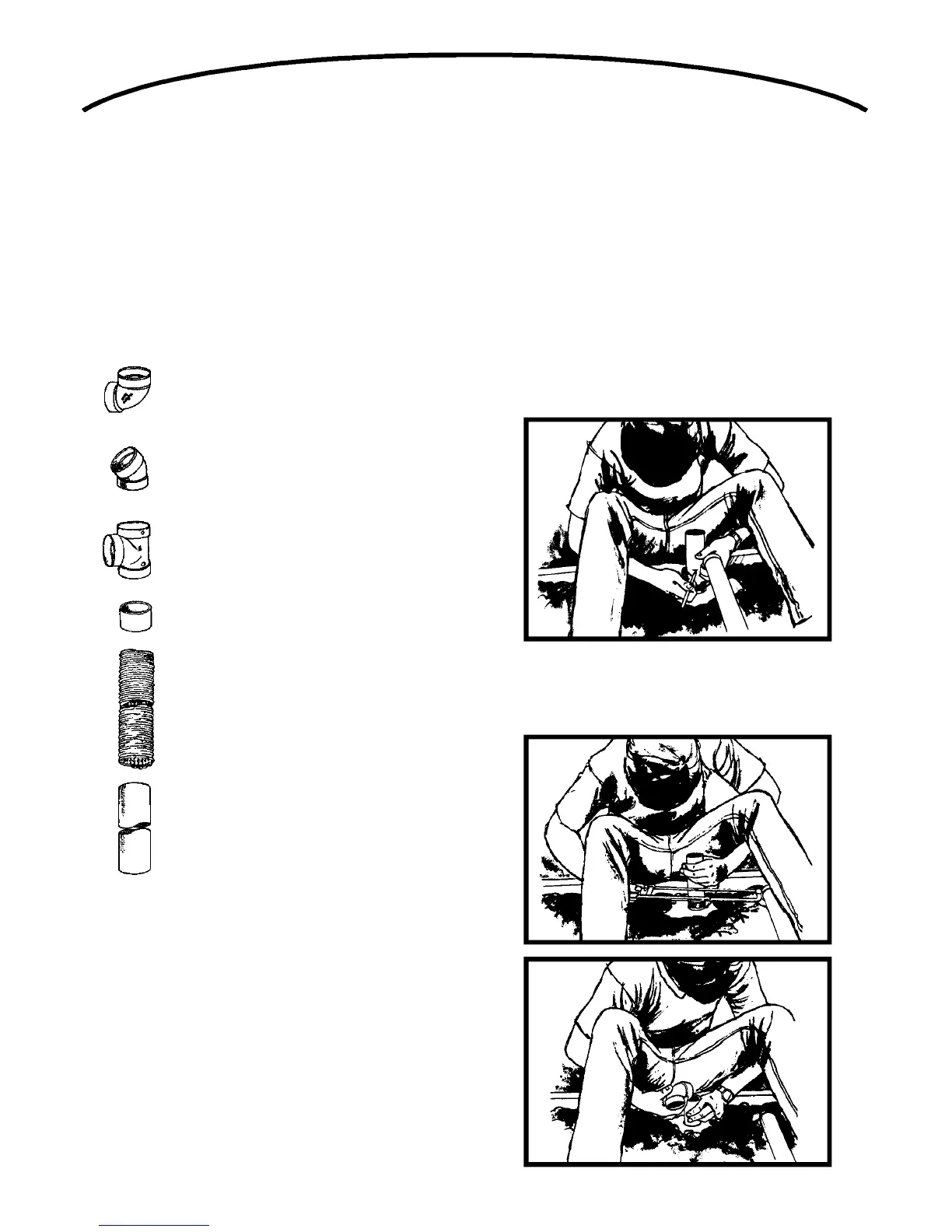Once you have installed all your inlets, you can complete
the network of tubing that connects your inlets to the
power unit. This network consists of the following parts:
90° Elbows
– Used for connecting
the inlet lines to the branch lines.
Also used for making smooth 90°
turns in branch lines or trunk lines.
45° Elbows
– Used for a 45°
tubing turn in branch or trunk lines.
90° Te e s
– Used to connect
branch lines to the trunk lines.
Stop Couplings
– Used to join
two lengths of tubing.
Flexible Tu b i n g
– Used to
bypass obstacles or to make difficult
S-turns in branch lines. This tubing is
supplied in a 36” length; it is not the
same as the inlet flex tube.
PVC Tubing
– 8’ straight sections
of tubing used for inlet, branch, and
trunk lines.
Use the tubing and fittings to run branch lines from the
inlet tubing to a main trunk line. Begin at the farthest inlet
from the power unit and work your way toward the power
unit. When you assemble sections with elbows and tees,
make sure the curve in the fitting is aligned so that the air
flows toward the power unit.
Assemble the entire network of tubing and fittings, making
sure every joint is accurately cut and aligned. Then, go
back and cement all the joints. You may run the wiring
and make the wiring connections after the network is
assembled and cemented, or you may make the wiring
connections as you assemble the network. Use the
method that best suits your needs.
Beginning The Trunk Line
Start the inlet line which is farthest from the power unit.
Place 90° elbow onto a section of tubing and align it with
the inlet tubing at the height it will run across the attic
joists. Mark the inlet tubing where the elbow will join,
allowing 5/8˝ for the tubing that inserts into the
fitting’s collar.
Now, cut the inlet tubing at the marked line. Make sure
the cut is straight and even. Attach the elbow and check
its fit. Then, insert the first section of tubing into the other
end of the elbow.
26
ASSEMBLING THE
TUBING SYSTEM

